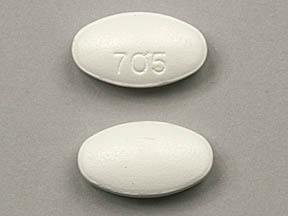Norfloxacin Interactions
There are 528 drugs known to interact with norfloxacin, along with 9 disease interactions, and 3 alcohol/food interactions. Of the total drug interactions, 115 are major, 338 are moderate, and 75 are minor.
- View all 528 medications that may interact with norfloxacin
- View norfloxacin alcohol/food interactions (3)
- View norfloxacin disease interactions (9)
Most frequently checked interactions
View interaction reports for norfloxacin and the medicines listed below.
- Acetylsalicylic Acid (aspirin)
- Activated Charcoal (charcoal)
- Adrenalin (epinephrine)
- Advil (ibuprofen)
- Alcohol (contained in alcoholic beverages) (ethanol)
- Amoxil (amoxicillin)
- Ativan (lorazepam)
- Azithromycin Dose Pack (azithromycin)
- B Complex 100 (multivitamin)
- Bactrim (sulfamethoxazole / trimethoprim)
- Calcium 600 D (calcium / vitamin d)
- Cipro (ciprofloxacin)
- Cotrim (sulfamethoxazole / trimethoprim)
- Heparin Sodium (heparin)
- Iodides (sodium iodide)
- Lithium Carbonate ER (lithium)
- Lyrica (pregabalin)
- Metoprolol Succinate ER (metoprolol)
- Metoprolol Tartrate (metoprolol)
- Paracetamol (acetaminophen)
- Penicillin G Procaine (procaine penicillin)
- Penicillin VK (penicillin v potassium)
- Valproate Sodium (valproic acid)
- Viagra (sildenafil)
- Vitamin B1 (thiamine)
- Vitamin B12 (cyanocobalamin)
- Vitamin B6 (pyridoxine)
- Vitamin C (ascorbic acid)
- Vitamin D3 (cholecalciferol)
- Vitamin K (phytonadione)
Norfloxacin alcohol/food interactions
There are 3 alcohol/food interactions with norfloxacin.
Norfloxacin disease interactions
There are 9 disease interactions with norfloxacin which include:
- colitis
- CNS disorders
- myasthenia gravis
- peripheral neuropathy
- QT interval prolongation
- tendonitis
- crystalluria
- diabetes
- renal dysfunction
More about norfloxacin
- Compare alternatives
- Reviews (5)
- Side effects
- Dosage information
- During pregnancy
- Drug class: quinolones and fluoroquinolones
- Breastfeeding
Related treatment guides
Drug Interaction Classification
| Highly clinically significant. Avoid combinations; the risk of the interaction outweighs the benefit. | |
| Moderately clinically significant. Usually avoid combinations; use it only under special circumstances. | |
| Minimally clinically significant. Minimize risk; assess risk and consider an alternative drug, take steps to circumvent the interaction risk and/or institute a monitoring plan. | |
| No interaction information available. |
See also:
Further information
Always consult your healthcare provider to ensure the information displayed on this page applies to your personal circumstances.


